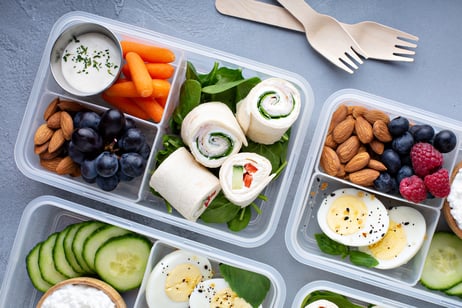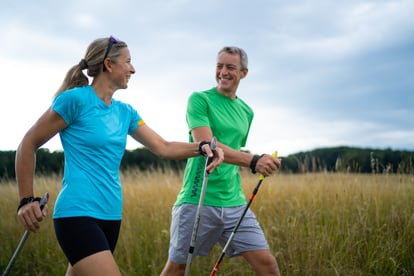We live in a world full of chaos, endless information, and never-ending to-do lists. It’s easy for our minds and bodies to become overwhelmed and fall into unhealthy coping habits. This is where mindfulness becomes so important. Mindfulness isn’t just quiet reflection—it’s the practice of staying present in the moment and taking time to reflect, reset, and recharge.

Less Stress, More Balance
Mindfulness helps your brain slow down and process the flood of information you take in every day. By pausing and focusing on your breath, you ground yourself and give your mind space to respond rather than react.
When you’re in “fight or flight,” it’s easy to rush to a solution without considering all your options. Staying present can lower tension, improve emotional balance, and give you greater mental clarity. Over time, this helps preserve your energy instead of draining it through constant stress responses.
Better Sleep
Do you struggle to unwind at night or replay everything you wish you had done differently? Mindfulness can calm racing thoughts and relax your body, making it easier to fall—and stay—asleep.
This leads to more energy, improved productivity, and greater presence throughout your day. Even a few minutes of mindful breathing before bed can help reset your nervous system and quiet those loud thoughts so you can rest fully.
Healthier Eating Habits
Mindfulness can also reshape your eating patterns. When you slow down and eat with intention, you’re less likely to overeat or grab less-nutritious choices out of habit. Paying attention to hunger cues helps you stop when you’re satisfied and choose foods that truly nourish your body.
How Can You Be More Mindful?
Mindfulness doesn’t have to look like the movie version of sitting cross-legged on the floor. It can be as simple as slowing down, grounding yourself with a few deep breaths, and giving yourself an extra moment before reacting.
Humans naturally react quickly, but that split second of pause helps break the cycle of stress-driven decisions. If you’re unsure where to start, try joining a yoga class here at NIFS. It provides dedicated time each week to reset your mindset, build awareness, and get back on track.
Mindfulness is a simple yet powerful tool that can reduce stress, improve sleep, and support healthier habits. With a few intentional pauses throughout your day, you can create more balance, clarity, and calm in your life.

 Thanksgiving is, in my opinion, the best holiday of the year. Theres no better way to express your love and care for someone than to make them a delicious meal and consume the delicious meal they made for you. Pair that with the added prospect of family members coming together from all over, and you’ve got great times waiting to happen. But sometimes love hurts, and on Thanksgiving that hurt takes the form of caloric surplus and post-meal shame. To prevent that, here are a few tips to help you enjoy the holiday to its fullest, free of any guilt:
Thanksgiving is, in my opinion, the best holiday of the year. Theres no better way to express your love and care for someone than to make them a delicious meal and consume the delicious meal they made for you. Pair that with the added prospect of family members coming together from all over, and you’ve got great times waiting to happen. But sometimes love hurts, and on Thanksgiving that hurt takes the form of caloric surplus and post-meal shame. To prevent that, here are a few tips to help you enjoy the holiday to its fullest, free of any guilt: Yoga and Stretch Classes
Yoga and Stretch Classes Feeling gratitude, or practicing it intentionally, can benefit our sense of happiness because we train our thoughts to entertain aspects of P.E.R.M.A. These thoughts serve our own greater good and connect us back to relationships, meaning, and life purpose. These thoughts are focused on things we value, regardless of the circumstances we are in.
Feeling gratitude, or practicing it intentionally, can benefit our sense of happiness because we train our thoughts to entertain aspects of P.E.R.M.A. These thoughts serve our own greater good and connect us back to relationships, meaning, and life purpose. These thoughts are focused on things we value, regardless of the circumstances we are in. Ready to bring more mindfulness and gratitude into your day?
Ready to bring more mindfulness and gratitude into your day? 


.jpg?width=391&height=347&name=GettyImages-1261754581(2).jpg) The Cornerstone of Nutrition: Caloric Intake
The Cornerstone of Nutrition: Caloric Intake
 Sometimes you might think you’re doing the right things (or at least not really wrong things) when it comes to healthy eating. But those habitual behaviors might actually cause you to consume more food and calories.
Sometimes you might think you’re doing the right things (or at least not really wrong things) when it comes to healthy eating. But those habitual behaviors might actually cause you to consume more food and calories. Vacation is supposed to be fun, enjoyable, and relaxing. When it comes to weight loss attempts or making healthy choices in general, however, traveling can be a challenge. Here are some of our RD’s best tips for healthy eating when traveling or on vacation.
Vacation is supposed to be fun, enjoyable, and relaxing. When it comes to weight loss attempts or making healthy choices in general, however, traveling can be a challenge. Here are some of our RD’s best tips for healthy eating when traveling or on vacation.
 Personal trainers are people, too (well, at least when no one is looking!). In reality, there are a lot of new bridges we, as a society, are crossing every single day. As a trainer, my goal is to put all my effort into making sure that my clients are being healthy with fitness and wellness as a priority. With the lockdown upon us, finding new ways to get this job done is a challenge, but so is making sure that you are finding time for yourself.
Personal trainers are people, too (well, at least when no one is looking!). In reality, there are a lot of new bridges we, as a society, are crossing every single day. As a trainer, my goal is to put all my effort into making sure that my clients are being healthy with fitness and wellness as a priority. With the lockdown upon us, finding new ways to get this job done is a challenge, but so is making sure that you are finding time for yourself. 
 Unless you have been on Mars for the last four or five decades, you have heard, read, and seen the benefits of walking for health and fitness. There is no new hot take on walking; it’s always been a fantastic way to stay healthy and enjoy exercise.
Unless you have been on Mars for the last four or five decades, you have heard, read, and seen the benefits of walking for health and fitness. There is no new hot take on walking; it’s always been a fantastic way to stay healthy and enjoy exercise.